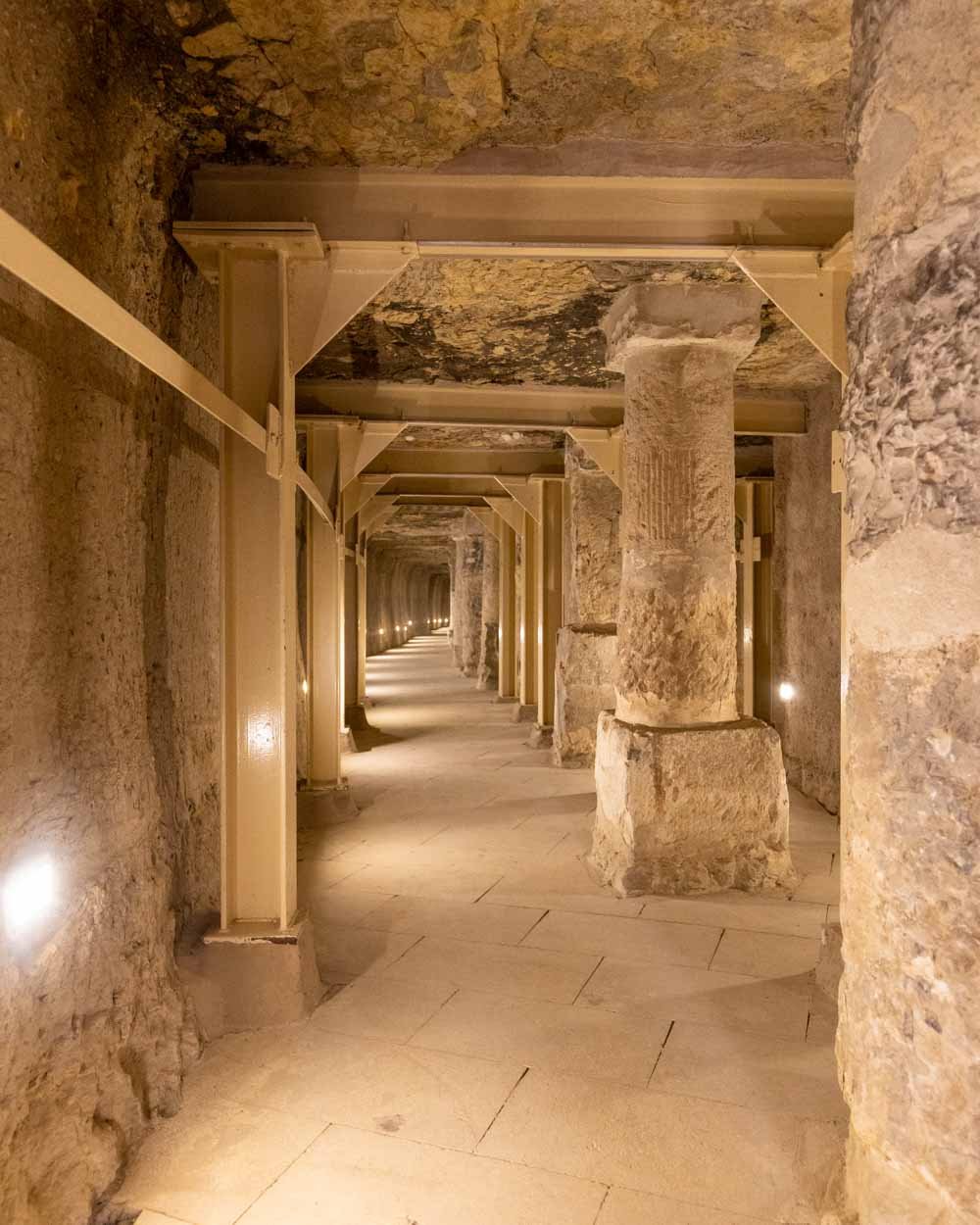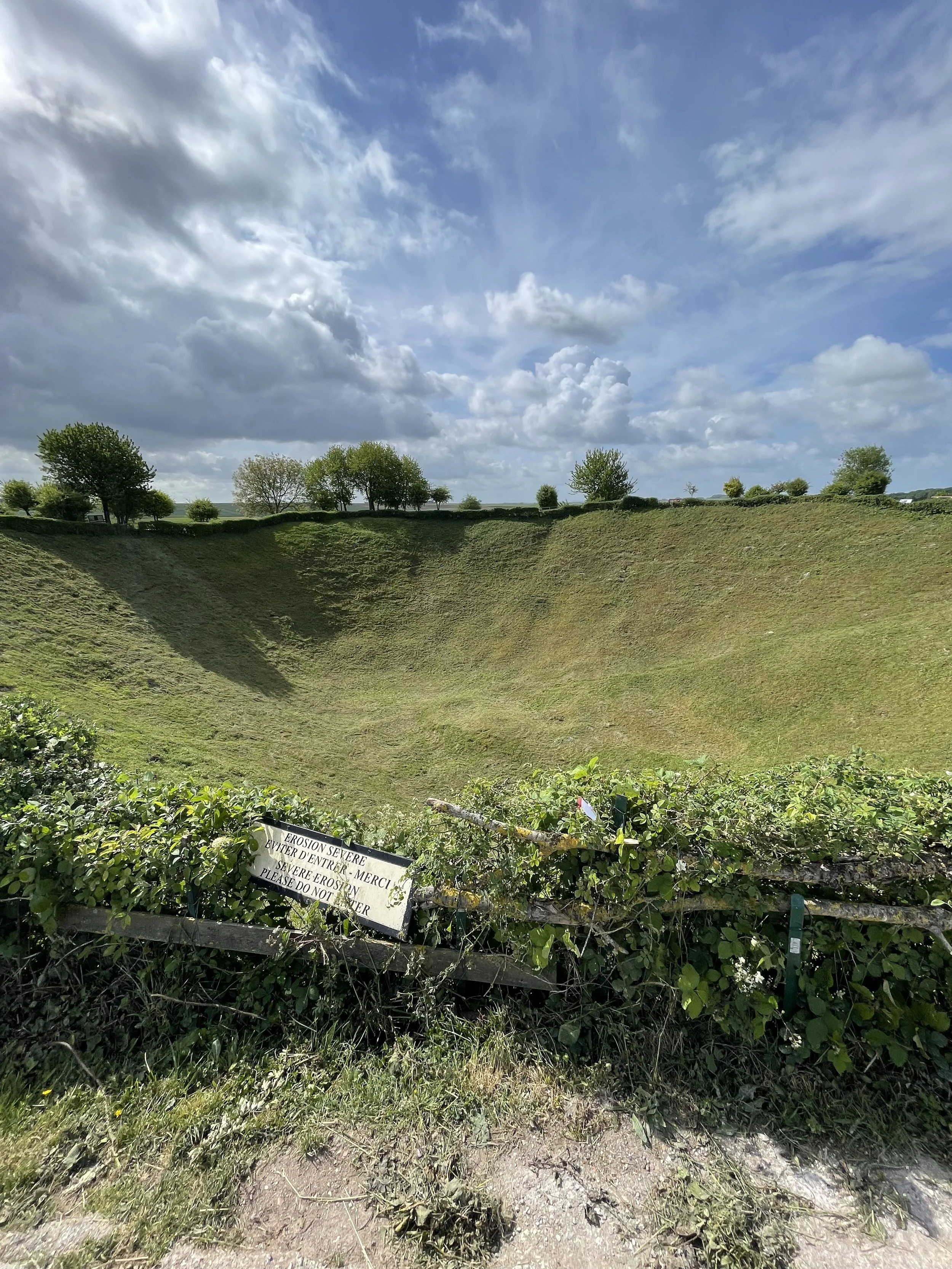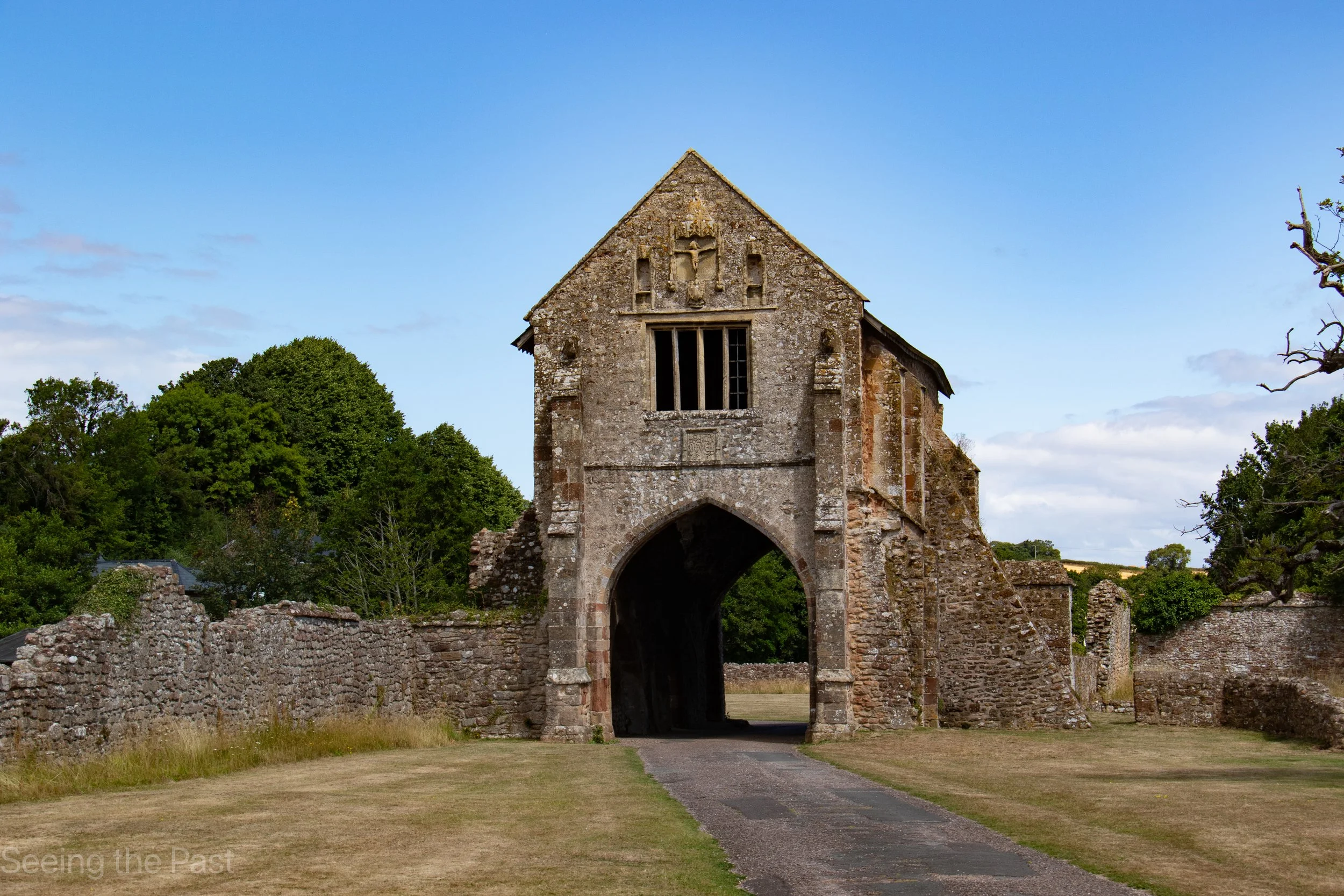Pharaoh Djoser and the world's first pyramid at Saqqara.
/This amazing pyramid is a major turning point in Egyptian and arguably, world history. It is a turning point because it led to one hundred pyramids being built in Egypt and is the first monumental stone building in the world. To build pyramids, required a huge workforce and an economic system to support the construction, the builders and to finance it all. When completed, it would have been stunning close up and being 60 m high, it could be seen for miles around. It would leave the lasting impression that this was a monument built for an awesome king. Today, when one thinks of Egypt, one thinks of pyramids and this was the first. Before it, pharaohs were buried in the ground and later on, in “mastabas”, ie small, low level, mud brick constructions, that lacked conveying any form of status. From now on, pyramids were to be seen, not as a pharaoh’s last resting place but as a popular TV programme has put it, a resurrection machine. To enhance and fulfil this concept, the pyramid was at the centre of a whole complex of buildings which again reflected on Djoser being a very different pharaoh from his predecessors. It is important because, the design of the stepped pyramid would be easily adapted into the true stereotypical, straight sided and familiar, pyramids. However, although the change in design may have seemed easy, the construction of straight sided pyramids threw up numerous problems and difficulties that had to be overcome. As impressive as the pyramid is, the funerary complex enclosed by a massive 1645 m long wall is eye opening.
Above; Djoser’s statue in the Cairo museum. He may well be moved to the Grand Egyptian Museum in the near future. Sadly, tomb robbers removed his eyes made of rock crystal, alabaster and obsidian.
Menu
1.What can I see when I visit the stepped pyramid at Saqqara?
2.Who was King Djoser and why did he build the first pyramid?
1.What can I see when I visit the stepped pyramid at Saqqara?
Above; Approaching from the car park, some symbolic temples can be seen next to the pyramid.
Above; To enter the complex, visitors have to go through a colonnaded corridor. This comprises of 40 limestone columns about 6metres or 20 ft tall, that have been carved to resemble bundled papyrus reeds.
Below; the end of the colonnaded entrance, with a turn to the right that will reveal the pyramid.
Above; the Heb-Sed Court with two “D shaped” walls that feature in the Heb-Sed or Sed festival. This was celebrated after the king had been on the throne for thirty years and repeated every three years after that. Part of the ceremony is where the king presents offerings to various gods and then is crowned with a white crown representing Upper (northern) Egypt and a red crown representing Lower Egypt (southern). Buildings on the east side of the court represent the shrines of Lower Egypt and those on the west side represent Upper Egypt. These buildings house various gods that have gathered to witness the event. His coronation is then followed by the king running along a course four times to show his symbolic rejuvenation and that he is still fit to rule. Being done in a funerary complex links his rejuvenation to eternity. He is then carried away in a great procession to visit some of the buildings in the complex.
Above; On the right is the the Heb Sed Court with associated chapels. On the left you can see the Mortuary temple.
Above; the Step Pyramid with, on the left, the “associated chapels” that were mentioned above.
At the back is a series of small buildings that includes the back entrance (see below) and the Serdab, where Dsojer’s ka resided.
Unfortunately, this not open at the moment but leads to 6km of subterranean tunnels and rooms. Down here, is Djoser’s burial chamber, 45 metres below ground level and also a picture of an athletic Djoser carved into the stone. Either side of the carving are numerous blue faience tiles some of which have been removed and can be seen in photo two of this blog showing Djoser’s statue.
Above; the Serdab.
Below; Djoser’s ka in the Serdab, the photo seems a little bit odd but it had to be taken through the little hole with poor light.
The ba is often simply described as the pharaoh’s spirit, but it is more than that. The ba is a double of the pharaoh and it has been described as a force that temporarily gives life to the pharaoh. When the pharaoh dies, the ka has to be fed and given something to drink by priests who carry out certain rituals . The food and drink is later removed and is consumed by the priests and/or given to the needy, once they believe that the essence has gone from the food to the ka. If the supply of food dried up, the hope of the pharaoh’s life after death would disappear. Although, unlike the pharaoh, it is an inanimate object but the force is within it. Djoser’s ka looked out northwards onto the evening sky and in particular, the constellation of Orion and the star Sirius, the brightest star. These had been there since time began and would be there for eternity. Djoser wished to have the same fate.
Above; what can be seen as you walk around the left side of the step pyramid?
Above; having walked around the back of the step pyramid, this rather sad looking, decayed, pyramid comes into view. I believe this is the step pyramid of Userkaf, (2494-2487 BC) the first pharaoh of the fifth dynasty.
Above; having gone all around the pyramid, the next task is to go to the south entrance and go inside the pyramid.
Below; this is what can be seen as you make your way deeper into the pyramid.
Below; this is what you have entered the pyramid to see, Djoser’s sarcophagus. Unfortunately it is minus Djoser’s mummy. The central shaft was constructed early on so that the heavy sarcophagus could be placed in position and then the pyramid would have been built on top of it.
Who was King Djoser and why did he build the first pyramid?
To begin with who are we discussing? Djoser was known as Netjeriket for most of his reign. Netjeriket was his Horus name ie the name they gave him which when written, always had a falcon above it, representing Horus. Netjeriket was inscribed on all of his monuments including his Step Pyramid. He reigned from 2667-2648 BC or BCE, that is 59 years before King Khufu who built the Great Pyramid at Giza, 1312 years before Tutankhamen, 1369 years before Ramses II (“Ramses the Great”) and 2597 years before Cleopatra VII. The dates may vary slightly according to which expert’s timeline you use but the gaps between the well known pharaohs are huge.
Djoser was different to other pharaohs in several ways. He only had one wife, Hetephernebti, when it was common to have several wives. She was his half sister which, he hoped, would secure his dynasty by reducing the possible claimants. All royal blood was invested in this marriage. If she had married someone else, her offspring would have a rival claim. As pharaoh, he was in charge of everything, acting as the commander in chief of the army with the aim of securing and extending Egypt’s boundaries. He also acted as the lawmaker and high priest. As pharaoh, he claimed to work alongside the gods with them all working together to provide order and prevent the Egyptians’ worst nightmare, “chaos”. He would be responsible for keeping the gods happy and would mediate between the gods and the people of Egypt. In so doing, order would be maintained and there would be enough food to feed all the people. This worked until the Nile failed to flood which meant that there would be far less water to irrigate the crops and silt would not be deposited to replenish the soil with essential plant nutrients. Seven years of famine followed and law and order began to break down. Djoser believed this was the work of unhappy gods and a solution was needed to be found quickly. His priests could not give him an answer to his problems and so he turned to his Vizier, chief minister Imhotep ( “Mr Fixit”) . Apparently, Imhotep travelled south along the Nile and in his dreams, he discovered that Khnum (or Khnemu) the God of the Nile, as well as of fertility and procreation, was unhappy. Khnum, along with other gods, felt that he had been ignored. With this information, Djoser reinstated a temple devoted to Khnum and this, along with certain ceremonies, placated the gods to the extent that the floods returned, crops flourished and order was restored.
Below; on the left is Khnum. This comes from the beautiful paintings of Nefertari’s tomb in the Valley of the Queens.
From here Djoser’s ego grew further wanting to be seen as a god on earth and upon his death, become immortal. He therefore commanded Imhotep to build him a tomb, worthy of a god and be a kind of resurrection machine, as various Egyptologists have described the function of a pyramid. He wished to live on for eternity. Furthermore, his name had to be remembered and used if he was to live on and so his tomb, would have to stand out over a large section of land so that everyone referred to it as King Djoser’s tomb. Some Egyptologists have suggested that he wanted to build a structure that would be so awesome that future people would believe that it must have been constructed by the gods!
Initially, kings were buried in the desert sand and their bodies would be preserved. However, desert winds would often expose and scatter those bodies and so they would fail to achieve the afterlife. It therefore became the practice to preserve the bodies through mummification and then place them in a subterranean tomb with a low building over the top made of mud bricks. These became known as “mastabas” after the Arabic word, bench.
Above: an artist’s impression of a mastaba.
Imhotep’s first idea was to build a huge mastaba but with immortality in mind, it would be made out of indestructible stone, not mud bricks. His location for this mastaba was to be a small incline on the west bank of the Nile. The west bank because that was the side the sun went below the horizon and “died”. The incline was chosen because the mastabas could then be seen over a long distance and the incline had solid bedrock to carry a large, heavy building. There was also building stone nearby that could be quarried. Lastly, the location, at Saqqara was near the capital of Memphis and Djoser’s palace.
It took 6 years to build the initial mastaba which was 8 metres high and 60 metres in length. Imhotep and Djoser wanted to build something totally new, that no-one had ever seen before. Thus, their initial idea was superseded with the one of building a smaller mastaba on top of the original one. This then was superseded with the more adventurous idea of constructing more mastabas on top of those already built. It ended up being a stack of 6 mastabas, 62 metres high, with a rectangular base 109m by 121m. The final flourish was to cover it all with polished white limestone that would shine in the mid-day sun. It took 19 years to complete and it is estimated that it contained 850 000 tons of limestone blocks. Recently, some Egyptologists have suggested that as more mastaba levels were constructed, the ones underneath were enlarged. In other words, the pyramid went upwards and outwards. To ensure that the pyramid would not fall down, the stones were placed with a slight slope inwards, with forces pressing towards the centre of each layer.
To enable the pyramid and the surrounding complex to be built, Egyptian society changed dramatically, as did the economy. Imhotep needed a vast workforce. The stone had to be quarried by a large group of men who had to be recruited, organised, trained, supplied with tools and paid with food and drink. The stone had to be the correct shape, be recorded and be transported to the construction site by officials. The workers had to have somewhere to live and be transported from all over Egypt. New farms had to be created and an organisation had to be put in place to get a vast amount of supplies from the farms to Saqqara. This required a lot of written administration and so a vast civil service (scribes) had to be created and this in turn, meant more people had to be taught to read and write. With all this in place, engineering techniques had to be developed and learnt.
From here, Djoser’s successors were able to build even bigger pyramids with square bases and flat sloping sides, what are sometimes called true pyramids. Djoser’ s name is remembered and used, with his pyramid still impressing people today who come from all over the world. Imhotep became a god and was even recognised by the Greeks when their civilisation was at its height.
Essential information.
Safety.
In all the places we went there were numerous police officers and soldiers carrying guns. The Egyptians are great hosts and are desperate to build up tourism and as a consequence are going out of their way to ensure the safety of the growing numbers of tourists. Most of the places we went to had airport style baggage checks with few queues.
Getting there
The easiest way to visit Djoser’s stepped pyramid is to hire a driver for the day. As there’s no public transport, hiring a driver will ensure you can see all the major sites and not have to worry about continuously haggling for a new taxi at every stop.You will need to haggle or negotiate with the driver but it will not be too expensive. Add to your itinerary the Red pyramid and the Bent pyramid which are only a few miles away.
Entry fees
At time of writing, the standard entry ticket is EGP 200 (USD $8) per person. This is something everyone has to buy, as well as EGP 10 (40c) per group for your taxi or car. As with a lot of sites in Egypt, you no longer have to pay for photography (although rules change on this constantly).
This will allow you to see the outside of almost everything in Saqqara, but if you want to go inside Djoser’s Pyramid or visit other areas in this complex, you will have to pay extra.
Tips
Unfortunately, all officials, guards etc will ask for tips (“backsheesh”), so take some low value Egyptian currency to cover tips on to of entry fees.
































Buckler’s Hard has three historical phases; a proposed sugar town that failed, a shipbuilding yard initially providing ships for the Royal navy and a base for various things linked to World War Two but especially D Day. Walking from the car park you suddenly come across this beautiful, unmodernised, Georgian street. One side of the road contains an amazing museum of all the activities that have taken place over the last 300 years. It includes some intricate models of sailing ship building here, loads of artefacts and full size waxwork models illustrating life in the late 18th and early 19th centuries.